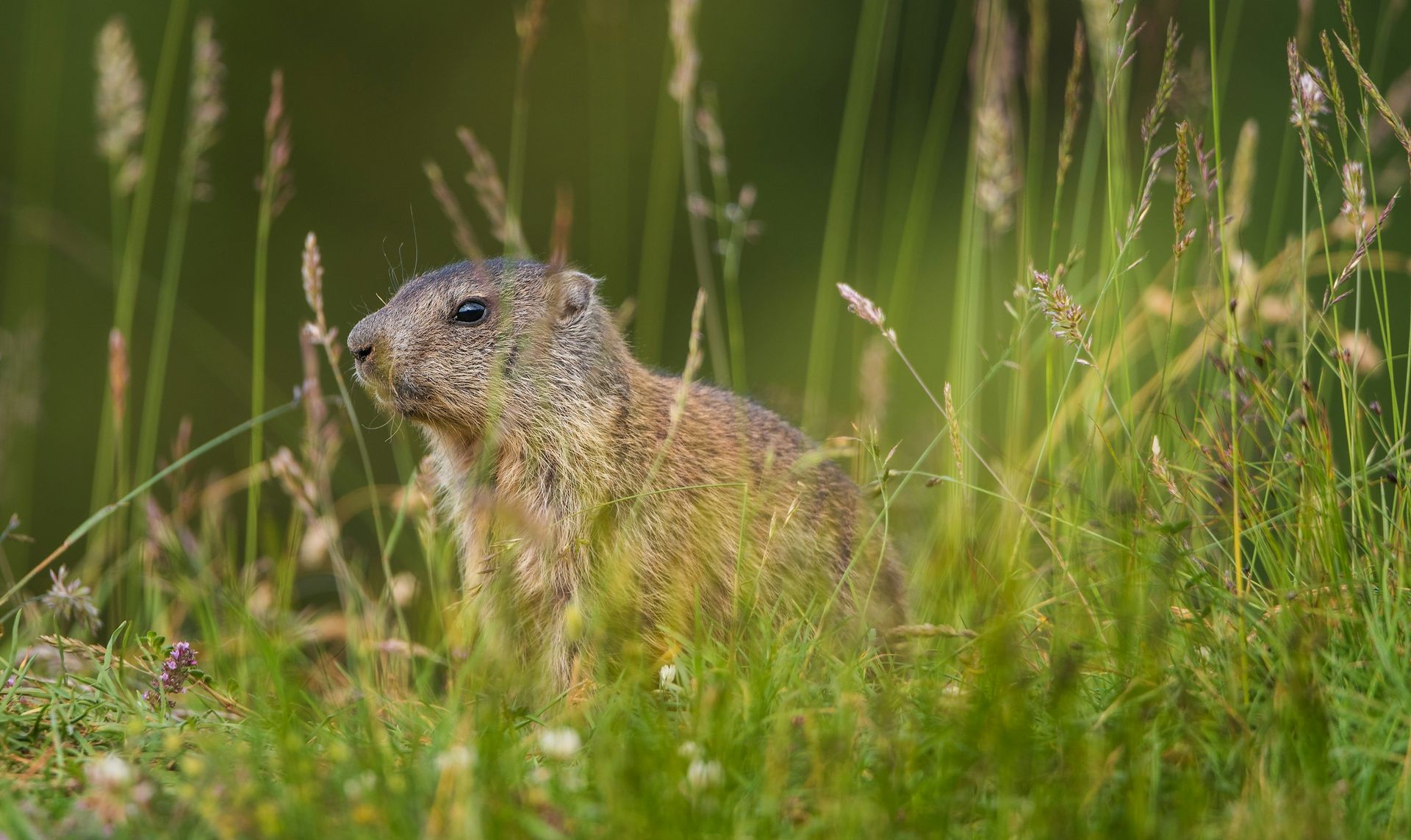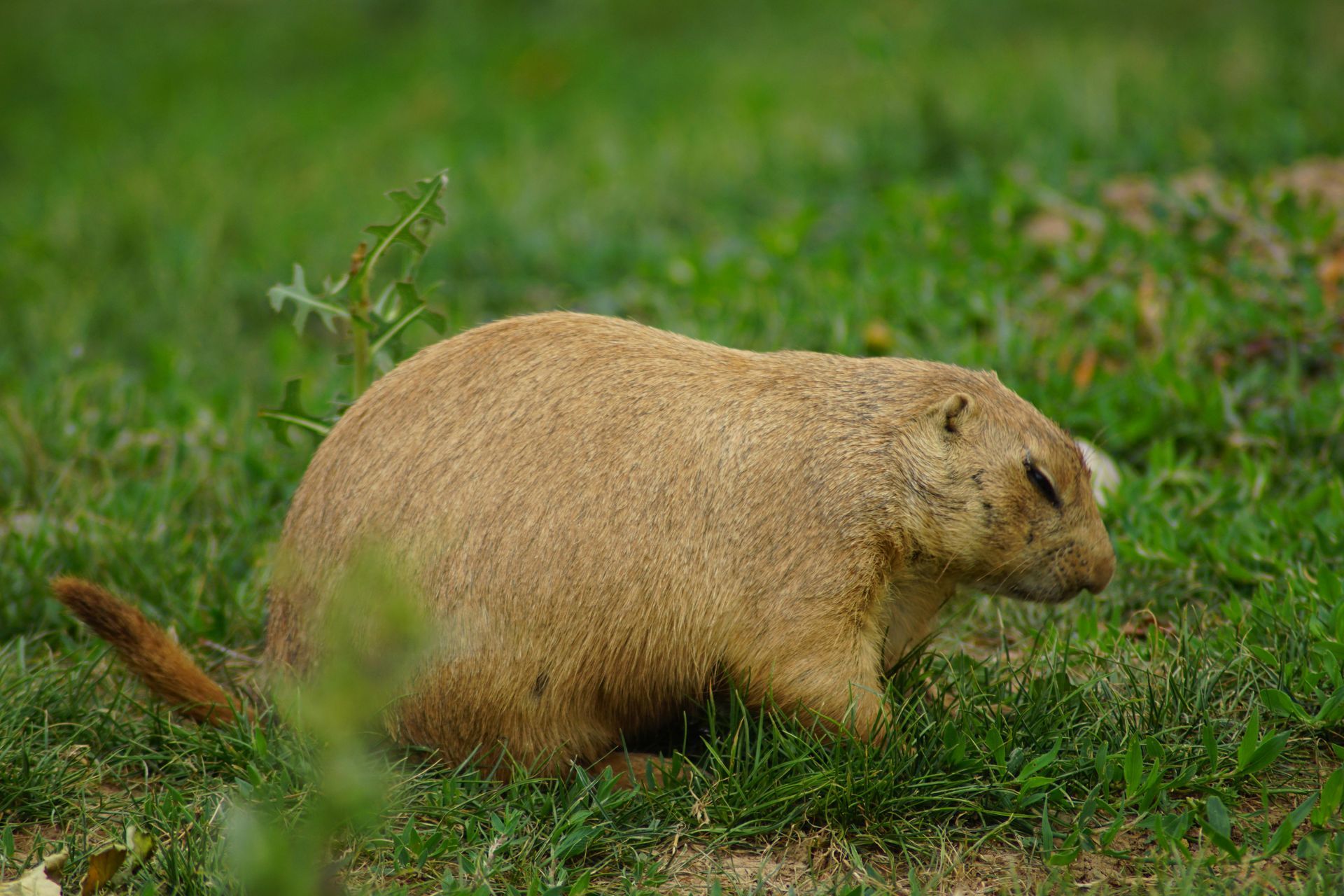Gophers are small, burrowing rodents known for their extensive tunnel systems and distinctive cheek pouches, which they use to carry food. Native to North and Central America, gophers thrive in a variety of habitats, including grasslands, forests, and agricultural fields. Their burrowing activities aerate the soil and promote healthy plant growth, making them important ecosystem engineers.
Most gophers measure between 5-14 inches in length and weigh around 1-2 pounds. They have stocky bodies, short legs, and fur-lined cheek pouches for transporting food. Their fur is typically brown or gray, helping them blend into their surroundings. Gophers are herbivores, feeding on roots, tubers, and other underground plant parts.
Gophers are solitary and highly territorial, with each individual maintaining its own network of tunnels. Breeding occurs in spring, with females giving birth to litters of 2-6 young after a gestation period of about 20 days. The young remain with their mother for a few weeks before venturing out to establish their own burrows.
Natural predators of gophers include hawks, snakes, foxes, and weasels. Human-related threats such as habitat destruction and agricultural practices can also impact their populations. Despite being considered pests in some areas, gophers play a crucial role in maintaining healthy ecosystems.

For your safety and the well-being of wildlife, please observe animals from a distance and avoid touching or disturbing them. If you encounter an animal that appears injured or in distress, contact a licensed wildlife rescue organization for guidance before intervening.
Found An Animal? Not sure how to help a wild animal in need? Learn when to step in, who to call, and how to help safely.
Did You Know?
- Gophers can run backward almost as fast as they can move forward, allowing them to navigate tunnels with ease.
- Their whiskers help them feel their way through dark burrows, acting like built-in sensors.
- Some gopher species create "listening posts" near tunnel entrances to detect predators before emerging.
- They are expert hoarders and can stash enough food in their underground pantries to last through winter.
- Gophers have special lips that close behind their incisors, allowing them to dig without swallowing dirt.
- Despite being solitary, gophers can communicate through vibrations in the ground, alerting others to danger.
- Their fur is water-resistant, helping them stay dry even when burrowing in damp soil.
- A gopher’s front teeth never stop growing, and they must constantly gnaw on roots and bark to keep them from getting too long.
- Some gophers use their strong claws and teeth to push intruders out of their tunnels, defending their underground territory aggressively.
Problems Faced In The Wild
- Habitat Loss: Urban development and agriculture reduce available habitat.
- Predation: Gophers are a primary food source for many predators, putting constant pressure on populations.
- Agricultural Practices: Pesticides and trapping can reduce local populations.
- Road Mortality: Gophers are vulnerable when crossing roads in search of new burrowing sites.
- Climate Change: Altered rainfall patterns can impact food availability and soil conditions.
- Human-Wildlife Conflict: Gophers are often targeted as agricultural pests.
Tips For Cohabitation
- Use Natural Barriers: Install underground barriers to protect gardens without harming gophers.
- Avoid Pesticides: Use eco-friendly methods to manage pests and reduce harm to gopher populations.
- Preserve Natural Areas: Maintain wild spaces that provide habitat for gophers and their predators.
- Plant Native Vegetation: Native plants are more resilient to gopher activity and support local ecosystems.
- Educate Others: Share the ecological benefits of gophers, such as soil aeration and their role in the food web.
- Install Motion-Activated Sprinklers: These can discourage gophers from entering specific areas without causing harm.



